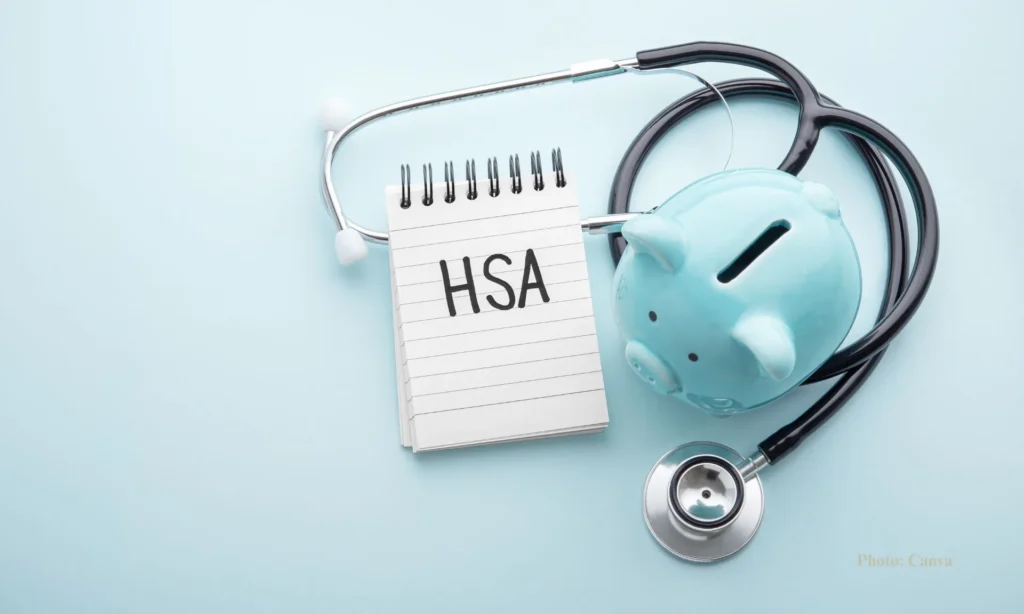Introduction: Why Your Health Savings Account (HSA) Could Be Your Most Powerful Financial Tool

In an era of rising healthcare costs and growing financial uncertainty, the health savings account (HSA) has emerged as one of the most valuable financial tools available to American taxpayers. Often called the “triple tax advantage” account, a health savings account (HSA) offers unprecedented tax benefits that surpass even traditional retirement accounts like 401(k)s and IRAs. Despite these advantages, millions of Americans either underutilize their HSAs or remain unaware of the account’s full potential for both immediate healthcare needs and long-term wealth building.
This comprehensive guide explores everything you need to know about maximizing your health savings account (HSA) in 2025 and beyond, from contribution strategies to investment approaches, tax-saving opportunities, and retirement planning techniques. Whether you’re self-employed, working for a company, or preparing for retirement, understanding how to leverage your HSA effectively could save you thousands in taxes while building a substantial healthcare nest egg for the future.
What Is a Health Savings Account (HSA) and How Does It Work?
A health savings account (HSA) is a tax-advantaged savings and investment account designed specifically for individuals enrolled in high-deductible health plans (HDHPs). Created as part of the Medicare Prescription Drug, Improvement, and Modernization Act of 2003, HSAs were established to help Americans manage rising healthcare costs while providing significant tax benefits. The fundamental principle behind a health savings account (HSA) is simple: allow people to save pre-tax dollars for medical expenses while encouraging personal responsibility for healthcare spending through high-deductible insurance plans.
Unlike flexible spending accounts (FSAs), health savings accounts offer permanent ownership, investment options, and no “use it or lose it” provisions. Your HSA belongs to you, not your employer, meaning the funds remain yours when changing jobs, and unused balances roll over indefinitely. This portability and permanence make the health savings account (HSA) a unique hybrid of savings account, investment vehicle, and supplemental retirement account.
The mechanics of an HSA are straightforward: you contribute pre-tax dollars (or tax-deductible post-tax dollars) to the account, invest those funds if desired, and withdraw money tax-free for qualified medical expenses. This creates the famous “triple tax advantage” that makes HSAs more tax-efficient than any other account type available to Americans. The account functions alongside your HDHP, providing a financial cushion for the higher deductibles these plans typically carry while offering lower monthly premiums compared to traditional health insurance.
The Triple Tax Advantage: Understanding Your HSA’s Unique Benefits
The health savings account (HSA) stands alone among all tax-advantaged accounts by offering three distinct tax benefits that work together to maximize your healthcare dollars. First, contributions to your HSA are tax-deductible, reducing your current taxable income dollar-for-dollar. When you contribute through employer payroll deductions, you avoid not only federal income tax but also FICA taxes (Social Security and Medicare), providing even greater tax savings. For someone in the 22% federal tax bracket, this could mean saving nearly 30% in combined taxes on every dollar contributed to their health savings account (HSA).
Second, any growth within your HSA – whether from interest, dividends, or capital gains – accumulates completely tax-free. Unlike taxable investment accounts where you pay taxes on earnings annually, your HSA investments compound without any tax drag, accelerating wealth accumulation over time. This tax-free growth feature makes the health savings account (HSA) particularly powerful for long-term investing, especially when combined with the account’s lack of required minimum distributions (RMDs) that affect traditional retirement accounts.
Third, withdrawals from your HSA are entirely tax-free when used for qualified medical expenses. This includes everything from doctor visits and prescriptions to dental care, vision expenses, and even certain over-the-counter medications. After age 65, the health savings account (HSA) becomes even more flexible: while medical withdrawals remain tax-free, non-medical withdrawals are taxed only as ordinary income without the 20% penalty that applies before age 65. This essentially transforms your HSA into a traditional IRA for non-medical expenses while maintaining superior tax treatment for healthcare costs.
2025 HSA Contribution Limits and Eligibility Requirements

For 2025, the IRS has set health savings account (HSA) contribution limits at $4,350 for individual coverage and $8,550 for family coverage, representing increases from the 2024 limits of $4,150 and $8,300 respectively. These limits apply to the combined total of employee and employer contributions, meaning if your employer contributes $1,000 to your HSA, your personal contribution limit would be reduced by that amount. Additionally, individuals aged 55 or older can make catch-up contributions of $1,000 annually, a provision that remains constant regardless of inflation adjustments.
To be eligible for HSA contributions, you must meet specific IRS requirements. First and foremost, you must be enrolled in a qualified high-deductible health plan with minimum deductibles of $1,650 for self-only coverage or $3,300 for family coverage in 2025. The plan must also have maximum out-of-pocket limits not exceeding $8,300 for self-only coverage or $16,600 for family coverage. Beyond HDHP enrollment, you cannot be covered by other non-HDHP health insurance (with some exceptions for specific types of coverage), cannot be enrolled in Medicare, and cannot be claimed as a dependent on another person’s tax return.
It’s crucial to understand that not all high-deductible plans qualify for HSA eligibility. Your health plan must meet specific IRS criteria beyond just having a high deductible. HSA-qualified plans typically cannot provide benefits before the deductible is met, except for preventive care services required under the Affordable Care Act. This means no copays for doctor visits or prescriptions until you’ve reached your deductible, distinguishing HSA-qualified HDHPs from other high-deductible plans that might offer some pre-deductible benefits.
READ ALSO: Strategies to Stretch Retirement Savings and Avoid Going Broke
Maximizing HSA Investments: Strategies for Long-Term Growth
One of the most underutilized features of health savings accounts is the ability to invest HSA funds for potential long-term growth. Surprisingly, less than 20% of HSA holders invest their account balances, missing out on significant wealth-building opportunities. By treating your health savings account (HSA) as an investment vehicle rather than just a spending account, you can potentially accumulate substantial funds for future medical expenses or retirement healthcare costs.
The key to successful HSA investing starts with establishing a cash target – the amount you keep liquid for near-term medical expenses. Many financial advisors recommend maintaining a cash balance equal to your annual deductible or expected yearly out-of-pocket expenses. Any funds above this threshold can be invested in various options, including mutual funds, ETFs, stocks, and bonds, depending on your HSA provider’s offerings. This approach balances immediate healthcare needs with long-term growth potential.
When developing your HSA investment strategy, consider your time horizon and risk tolerance. If you’re young and healthy with minimal medical expenses, you might adopt a more aggressive investment approach, allocating a higher percentage to growth-oriented investments. Conversely, if you’re nearing retirement or have ongoing medical needs, a more conservative allocation emphasizing capital preservation might be appropriate. Many HSA providers now offer target-date funds or managed account options that automatically adjust your investment mix based on your age and retirement timeline, simplifying the investment process for those uncomfortable making individual investment decisions.
The power of compound growth in a tax-free environment cannot be overstated. Consider this example: a 30-year-old who contributes the maximum individual amount to their health savings account (HSA) annually and invests the funds could potentially accumulate over $1 million by age 65, assuming a 7% annual return. This substantial sum could cover the average retiree’s healthcare costs many times over, with Fidelity estimating that a 65-year-old individual needs approximately $165,000 in after-tax savings for retirement healthcare expenses.
Smart HSA Spending Strategies: Immediate Use vs. Long-Term Accumulation (continued)
…medical expenses from previous years and reimburse yourself decades later, effectively using your HSA as a tax-free investment account while maintaining access to funds if needed.
This “pay out-of-pocket now, reimburse later” approach requires meticulous record-keeping but offers maximum flexibility. Save all medical receipts, EOBs (Explanation of Benefits), and documentation in a secure digital format. Some HSA holders create spreadsheets tracking unreimbursed medical expenses, building a “bank” of qualified expenses they can tap into tax-free at any time. This strategy works particularly well for those with sufficient cash flow to cover current medical costs while allowing their health savings account (HSA) to grow undisturbed.
For those facing immediate financial constraints, using HSA funds for current medical expenses remains perfectly valid and beneficial. The tax advantages still apply, and you’re effectively receiving a discount on medical care equal to your marginal tax rate. However, consider establishing a hierarchy for HSA spending: use the account first for larger expenses like surgeries or emergency care, while trying to cash-flow smaller routine expenses like annual checkups or prescriptions. This balanced approach helps preserve HSA growth potential while providing financial relief when truly needed.
Advanced HSA users might also consider the “HSA-to-IRA rollover” strategy, where you perform a once-in-a-lifetime transfer of HSA funds to an IRA. While this eliminates the healthcare benefit, it can be useful in specific circumstances, such as having excessive HSA funds relative to expected medical needs. However, this strategy should be carefully evaluated with a financial advisor, as it sacrifices the unique tax advantages of the health savings account (HSA) for traditional retirement account treatment.
Navigating HSA Rules for Different Life Stages
Your health savings account (HSA) strategy should evolve with your life circumstances, adapting to changing healthcare needs, income levels, and family situations. Young professionals in their 20s and 30s often benefit most from maximizing HSA contributions and investing aggressively, taking advantage of decades of potential tax-free growth. With typically lower healthcare expenses and longer investment horizons, this demographic can build substantial healthcare wealth by treating their HSA primarily as a retirement account.
As you enter your 40s and 50s, healthcare costs typically increase while your investment timeline shortens. This life stage often requires balancing immediate medical needs with continued long-term savings. Consider increasing your cash target to cover higher expected medical expenses while maintaining a diversified investment portfolio for remaining funds. The catch-up contribution provision becomes available at age 55, allowing an additional $1,000 annual contribution to accelerate savings as retirement approaches.
Family considerations add complexity to HSA planning. When you marry, you’ll need to coordinate health insurance coverage and HSA strategies with your spouse. If both spouses have access to HSA-eligible plans, you might maximize savings by each maintaining separate HSAs up to individual limits, effectively doubling your family’s tax-advantaged healthcare savings. However, if one spouse has access to superior non-HDHP coverage, foregoing HSA eligibility might provide better overall value despite losing tax advantages.
Parenthood introduces new variables, as children’s healthcare needs can be unpredictable and substantial. The higher family contribution limits help offset increased expenses, but you’ll likely need to adjust your cash target upward. Consider pediatric dental and orthodontic expenses, which can be significant but are qualified HSA expenses. Some parents strategically time expensive procedures like braces to maximize HSA benefits, contributing extra in advance when these costs are anticipated.
The transition to Medicare at age 65 marks a critical HSA milestone. You must stop contributing to your health savings account (HSA) once Medicare coverage begins, but you can continue using accumulated funds for qualified expenses, including Medicare premiums (except Medigap). Many retirees find their HSAs invaluable for covering Medicare Part B and Part D premiums, dental care, vision expenses, and other costs traditional Medicare doesn’t fully cover. The penalty for non-medical withdrawals also disappears at 65, providing additional flexibility in retirement.
Comparing HSAs to Other Healthcare Accounts
Understanding how your health savings account (HSA) compares to other healthcare-related accounts helps optimize your overall benefits strategy. The most common comparison involves HSAs versus Flexible Spending Accounts (FSAs). While both offer tax advantages for medical expenses, HSAs provide superior flexibility and long-term benefits. Unlike FSAs, which typically operate under “use it or lose it” rules requiring you to forfeit unused funds at year-end, HSA balances roll over indefinitely and remain yours permanently.
FSAs are employer-owned accounts that don’t follow you when changing jobs, while your health savings account (HSA) remains yours regardless of employment status. FSAs also lack investment options and have lower contribution limits ($3,200 for 2024). However, FSAs don’t require HDHP enrollment, making them accessible to those with traditional health insurance. Some employers offer both HSA-eligible plans and limited-purpose FSAs, which can be used alongside HSAs for dental and vision expenses only.
Health Reimbursement Arrangements (HRAs) represent another healthcare account type, but these are entirely employer-funded and employer-owned. Unlike HSAs, employees cannot contribute to HRAs, and the funds typically don’t carry over between years or follow you to new employment. HRAs can work alongside HSAs in some configurations, providing additional employer-funded healthcare benefits, but they lack the ownership and investment features that make health savings accounts (HSAs) powerful long-term wealth-building tools.
When comparing HSAs to traditional retirement accounts like 401(k)s and IRAs, the health savings account (HSA) often emerges as the superior option for healthcare expenses. While 401(k)s and traditional IRAs require you to pay income tax on withdrawals (even for medical expenses), HSA withdrawals for qualified medical expenses remain completely tax-free. This advantage becomes particularly valuable in retirement when healthcare costs typically peak. Some financial advisors recommend prioritizing HSA contributions even before maximizing 401(k) contributions, especially after securing any employer match.
Roth IRAs share the tax-free withdrawal feature with HSAs but only for contributions and only after age 59½ (earnings can be withdrawn tax-free after five years and age 59½). HSAs allow tax-free withdrawals for medical expenses at any age without penalties or restrictions. Additionally, HSA contributions are tax-deductible regardless of income level, while Roth IRA contributions face income-based phase-outs. For high-income earners who exceed Roth IRA eligibility limits, the health savings account (HSA) provides an alternative vehicle for tax-free retirement healthcare savings.
Advanced HSA Optimization Techniques
Sophisticated HSA users employ various strategies to maximize their account’s potential beyond basic contribution and investment approaches. One powerful technique involves coordinating HSA contributions with other tax strategies. For instance, if you’re on the border between tax brackets, additional HSA contributions might reduce your taxable income enough to drop into a lower bracket, amplifying your tax savings beyond the contribution’s face value.
The “last month rule” provides an opportunity to maximize contributions even when you haven’t been HSA-eligible for the entire year. If you’re eligible on December 1st, you can contribute the full annual maximum for that year. However, you must maintain HSA eligibility for a 13-month testing period (through December of the following year) or face taxes and penalties on excess contributions. This rule particularly benefits those starting new jobs with HSA-eligible coverage late in the year.
Some advanced practitioners utilize multiple HSAs strategically. While you can only contribute to one HSA at a time, you can maintain multiple accounts. This might involve keeping one HSA invested for long-term growth while using another for current medical expenses, simplifying record-keeping and investment management. Some providers offer better investment options or lower fees, making account diversification potentially beneficial.
Family HSA optimization requires careful coordination. Married couples might strategically choose individual versus family coverage based on their specific circumstances. In some cases, maintaining two individual HSA-eligible plans allows for higher combined contributions than a single family plan, especially when considering catch-up contributions for those over 55. However, this strategy must be weighed against potentially higher premiums and other coverage considerations.
The “preventive care expansion” updates from the IRS have created new optimization opportunities. Recent guidelines allow HSA-qualified HDHPs to cover certain chronic disease treatments as preventive care before the deductible. This includes specific medications for conditions like diabetes, heart disease, and asthma. Understanding these provisions helps maximize your health savings account (HSA) benefits while managing chronic conditions effectively.
For self-employed individuals and small business owners, HSAs offer unique advantages. Contributions reduce both income tax and self-employment tax, providing enhanced tax savings compared to traditional employees. Business owners might also consider establishing HSA-compatible group health plans, potentially offering employer contributions as an additional benefit while maintaining their own HSA eligibility.
READ ALSO: The Ultimate Guide to Savings Accounts: Where to Grow Your Money
Common HSA Mistakes to Avoid
Despite their powerful benefits, health savings accounts (HSAs) are often mismanaged due to common misconceptions and errors. One frequent mistake involves failing to invest HSA funds, leaving money in low-yield savings accounts when it could be growing tax-free in investment markets. With average HSA cash accounts earning minimal interest, the opportunity cost of not investing can be substantial over time, potentially costing thousands in foregone growth.
Another critical error occurs when people confuse HSA eligibility requirements. Simply having a high deductible doesn’t automatically qualify your health plan for HSA compatibility. Many individuals mistakenly contribute to HSAs while enrolled in non-qualified plans, triggering tax penalties and complications. Always verify your plan’s HSA eligibility with your insurer or benefits administrator before making contributions.
Poor record-keeping represents another common pitfall. The IRS requires you to maintain documentation for all HSA withdrawals to prove they were used for qualified medical expenses. Failing to save receipts, explanations of benefits (EOBs), and other documentation could result in taxes and penalties if audited. Digital storage solutions and dedicated expense tracking apps can help maintain organized records throughout the years.
Many HSA holders also make the mistake of viewing their account solely as a spending vehicle rather than a long-term investment opportunity. Immediately withdrawing funds for every small medical expense prevents the account from reaching its full potential. Consider whether you can afford to pay minor medical expenses out-of-pocket, allowing your health savings account (HSA) to compound tax-free for future needs.
Timing errors around Medicare enrollment can also prove costly. Contributing to an HSA after Medicare coverage begins (even if you’re still working) violates IRS rules and triggers penalties. The six-month lookback rule for Medicare Part A can catch people off guard – if you enroll in Medicare after age 65, Part A coverage retroactively begins six months prior, potentially creating improper HSA contributions during that period.
HSA Provider Selection and Account Management
Choosing the right HSA provider significantly impacts your account’s effectiveness and growth potential. While many employers offer default HSA providers, you’re not obligated to use them and can often benefit from shopping around. Key factors to consider include fee structures, investment options, user interface quality, customer service, and integration with your health insurance plan.
Fee analysis should examine both monthly maintenance fees and investment-related costs. Some providers waive maintenance fees for accounts maintaining minimum balances, while others charge regardless of account size. Investment fees vary widely, from low-cost index fund options to expensive actively managed funds. Transaction fees, transfer fees, and closure fees also merit consideration. Calculate the total annual cost based on your expected usage patterns.
Investment options represent a crucial differentiator among HSA providers. Leading providers offer diverse investment menus including mutual funds, ETFs, and sometimes individual stocks. Some providers require minimum cash balances before allowing investments, while others permit investing your entire balance. The quality and variety of investment options can significantly impact long-term growth potential, making this a critical selection criterion for those prioritizing HSA accumulation.
User experience shouldn’t be overlooked when selecting a health savings account (HSA) provider. Modern providers offer mobile apps, expense tracking tools, receipt storage capabilities, and integration with health insurance claims. Some platforms automatically identify HSA-eligible expenses from linked credit cards, streamlining reimbursement processes. Consider how you’ll interact with your account and choose a provider whose interface aligns with your preferences.
For those with existing HSAs looking to switch providers, the transfer process is generally straightforward but requires attention to detail. Direct trustee-to-trustee transfers avoid tax complications and the 60-day rollover rule. Some providers charge transfer fees or account closure fees, which should factor into your switching decision. Timing transfers strategically can minimize market exposure for invested funds and ensure continuous account access.
Tax Reporting and Compliance for HSAs
Proper tax reporting for your health savings account (HSA) ensures you receive full tax benefits while avoiding IRS penalties. Form 8889 serves as the primary HSA tax form, reporting contributions, distributions and calculating any applicable taxes or penalties. This form must be filed with your annual tax return whenever you contribute to or withdraw from an HSA during the tax year.
HSA contributions made through payroll deduction appear on your W-2 in Box 12 with code W, indicating they’ve already been excluded from taxable income. Direct contributions made outside payroll require reporting on Form 8889 to claim the above-the-line deduction. This distinction matters because payroll contributions avoid FICA taxes while direct contributions don’t, though both reduce federal income tax liability.
Distribution reporting requires particular attention to detail. Your HSA custodian provides Form 1099-SA showing total distributions for the year, but you must track and report what portion went to qualified medical expenses. Non-qualified distributions before age 65 incur both income tax and a 20% penalty, making accurate record-keeping essential. The IRS doesn’t require receipt submission with your return but may request documentation during an audit.
State tax treatment of HSAs varies significantly across the country. While most states follow federal tax treatment, California and New Jersey don’t recognize HSAs for state tax purposes. Residents of these states must add HSA contributions back to state taxable income and pay state tax on HSA earnings. This creates additional complexity for tax planning and may influence HSA strategy for affected residents.
Employer contributions to your health savings account (HSA) require special attention. While these contributions aren’t taxable income, they count toward your annual contribution limit. Some employers make contributions throughout the year, while others provide lump-sum contributions. Understanding your employer’s contribution schedule helps optimize your personal contributions to maximize the annual limit without exceeding it.
HSAs in Retirement: A Powerful Healthcare Funding Tool
The transition to retirement transforms your health savings account (HSA) from a tax-advantaged savings vehicle into a critical healthcare funding source. With healthcare costs typically accelerating in retirement and Medicare covering only about 80% of medical expenses, your accumulated HSA funds become invaluable for bridging coverage gaps. Strategic HSA management during retirement can significantly impact your financial security and healthcare access.
Medicare integration represents the first major retirement consideration. Once enrolled in Medicare, you cannot make new HSA contributions, but existing funds remain available for qualified expenses. Your HSA can pay Medicare Part B premiums (currently $174.70 monthly for most beneficiaries in 2024), Part D prescription coverage premiums, and Medicare Advantage plan premiums. However, Medigap supplemental insurance premiums don’t qualify for tax-free HSA reimbursement.
Long-term care expenses present another strategic use for retirement HSA funds. Tax-free withdrawals can cover long-term care insurance premiums within age-based IRS limits ($6,020 annually for those over 70 in 2025). Additionally, actual long-term care services, whether in-home or facility-based, qualify as medical expenses for HSA purposes. This creates a powerful tool for managing one of retirement’s most significant financial risks.
Post-65 flexibility enhances the HSA’s retirement value proposition. While maintaining tax-free treatment for medical expenses, the 20% penalty for non-medical withdrawals disappears after age 65. Non-medical distributions are taxed as ordinary income, similar to traditional IRA withdrawals, effectively providing an additional retirement account with superior tax treatment for healthcare costs. This dual-purpose functionality makes HSAs uniquely valuable in retirement portfolio planning.
Estate planning considerations add another dimension to retirement HSA strategy. Spousal beneficiaries can inherit HSAs tax-free, treating the account as their own HSA. Non-spouse beneficiaries receive the account value as taxable income, though they can use funds for the deceased’s final medical expenses within one year. Some retirees strategically spend down HSAs before other accounts to minimize tax impact on heirs, while others preserve HSA funds for surviving spouses’ healthcare needs.
Future Outlook: HSA Evolution and Legislative Trends
The health savings account (HSA) landscape continues evolving through legislative proposals and regulatory updates. Recent expansions of preventive care definitions and covered services suggest a trend toward greater flexibility in HSA-qualified plan design. Proposed legislation in Congress would further expand HSA access and benefits, including increased contribution limits, broader eligibility criteria, and enhanced investment options.
Bipartisan support for HSA expansion reflects growing recognition of these accounts’ role in addressing healthcare affordability. Proposed changes include allowing HSA contributions for those on Medicare, increasing contribution limits to match HDHP out-of-pocket maximums, and expanding qualified medical expense definitions. While legislative outcomes remain uncertain, the general trajectory favors enhanced HSA flexibility and accessibility.
Technology integration promises to streamline HSA management and optimization. Artificial intelligence and machine learning applications are beginning to offer personalized HSA investment recommendations, automated expense categorization, and predictive healthcare cost modeling. Mobile applications increasingly provide real-time eligibility verification for expenses, receipt scanning with optical character recognition, and seamless reimbursement processing.
The intersection of HSAs with emerging healthcare delivery models presents interesting possibilities. Direct primary care arrangements, telemedicine platforms, and health sharing ministries are exploring HSA compatibility. As healthcare delivery continues evolving, HSA regulations may adapt to accommodate new models while maintaining tax advantage integrity.
Employer adoption trends suggest continued HSA growth and mainstream acceptance. More employers are offering HSA-eligible plans as their only health insurance option, recognizing the cost benefits and employee empowerment these arrangements provide. This shift toward consumer-directed healthcare, anchored by health savings accounts (HSAs), appears likely to accelerate as healthcare costs continue rising and employers seek sustainable benefit solutions.
Conclusion: Maximizing Your Health Savings Account (HSA) Potential
The health savings account (HSA) represents far more than a simple medical expense account – it’s a sophisticated financial tool offering unparalleled tax advantages and long-term wealth-building potential. By understanding and implementing the strategies outlined in this guide, you can transform your HSA from an underutilized benefit into a cornerstone of your financial plan.
Whether you’re just starting your HSA journey or looking to optimize an existing account, the key lies in viewing your health savings account (HSA) holistically. Consider it alongside your other financial goals, from emergency savings to retirement planning. The triple tax advantage, investment growth potential, and ultimate flexibility make HSAs uniquely powerful for Americans navigating today’s complex healthcare landscape.
As healthcare costs continue rising and traditional retirement funding sources face uncertainty, your HSA becomes increasingly valuable. Start maximizing your contributions today, invest wisely for long-term growth, and maintain meticulous records to ensure you capture every available tax benefit. With proper planning and strategic implementation, your health savings account (HSA) can provide financial security and healthcare peace of mind for decades to come.
Take action now: Review your current health insurance options for HSA eligibility, calculate your optimal contribution amount, and select an HSA provider that aligns with your investment goals. Your future self will thank you for building this powerful financial resource today. The path to healthcare financial freedom starts with your next HSA contribution.
Frequently Asked Questions About Health Savings Accounts (HSAs)
Q: Can I have both an HSA and an FSA?
A: Yes, but with limitations. You can have a limited-purpose FSA alongside your HSA, which can only be used for dental and vision expenses. You cannot have a general-purpose FSA that covers medical expenses while contributing to an HSA, as this would disqualify you from HSA eligibility.
Q: What happens to my HSA if I switch to a non-HDHP health plan?
A: You can keep your existing HSA and continue using the funds for qualified medical expenses tax-free. However, you cannot make new contributions while covered by a non-HDHP plan. Your investments can continue growing tax-free, and you retain full ownership of the account.
Q: Can I use my HSA to pay for my spouse’s or children’s medical expenses?
A: Yes, you can use HSA funds for qualified medical expenses incurred by your spouse and tax dependents, even if they’re not covered by your HDHP. This includes children claimed as dependents on your tax return, regardless of their health insurance coverage.
Q: How long do I need to keep receipts for HSA expenses?
A: The IRS recommends keeping receipts for at least three years after filing your tax return. However, since HSA reimbursements have no time limit, many experts suggest keeping receipts indefinitely if you plan to reimburse yourself years later for current medical expenses.
Q: Can I roll over funds from my 401(k) or IRA to my HSA?
A: No, direct rollovers from retirement accounts to HSAs aren’t permitted. However, you can perform a once-in-a-lifetime rollover from an IRA to an HSA, limited to your annual HSA contribution limit. This counts toward your annual contribution limit and requires careful planning to execute properly.
Q: What investment options are typically available in HSAs?
A: Investment options vary by provider but commonly include mutual funds, ETFs, stocks, and bonds. Some providers offer target-date funds or robo-advisor services. The key is finding a provider whose investment options align with your risk tolerance and long-term objectives.
Q: Can I contribute to an HSA if I’m covered by my spouse’s non-HDHP plan?
A: No, being covered by any non-HDHP disqualifies you from HSA contributions, even if you also have your own HDHP. However, you can still use existing HSA funds for qualified expenses.
Q: How do HSA contributions affect my tax bracket?
A: HSA contributions reduce your adjusted gross income (AGI), potentially lowering your tax bracket. For example, if your income puts you just into the 24% bracket, maximizing HSA contributions might drop you back to the 22% bracket, providing additional tax savings beyond the contribution deduction itself.
In another related article, Best High Yield Savings Accounts of 2025: A Finance Devil Guide to Maximizing Your Savings





